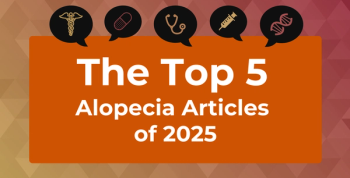
Medicaid Budget Survey Highlights Postpandemic Challenges and Priorities
Key Takeaways
- Medicaid enrollment is projected to decline by 4.4% in FY 2025, with spending growth slowing to 3.9%.
- States prioritize mental health, substance use disorder services, and addressing racial and ethnic health disparities.
The Medicaid budget survey for fiscal years 2024 and 2025 revealed state predictions are expecting a decline in Medicaid enrollment and an increase in spending next year due to the end of pandemic-era policies and federal funding.
With pandemic-era policies and federal funding ending in 2024, states have estimated that enrollment in Medicaid will decline while spending increases in fiscal year (FY) 2025. The 2024 to 2025 FYs Medicaid budget survey focused on various priorities based on the pandemic-related continuous enrollment provision ending and the resulting uncertainty about the stability of state revenues. The survey was conducted by KFF and Health Management Associates, in collaboration with the National Association of Medicaid Directors.1
States offered continuous Medicaid enrollment to patients in exchange for an increase in the Federal Medical Assistance Percentage (FMAP), shortly after the COVID-19 pandemic began.2 The pandemic-era policy, funded by increased federal matching, led to record Medicaid enrollment; however, continuous enrollment provisions officially ended with the 2023 Consolidated Appropriations Act that mandated states to begin the “unwinding” process of disenrolling millions of patients.
Benefits and Prescription Drugs
Most states have continued to prioritize mental health and substance use disorder services, expanding crisis care and pregnancy/postpartum support.1 Amplified pregnancy and postpartum services showed beneficial actions that include coverage of doula services or expansions that reduce maternal morbidity and mortality while addressing racial and ethnic health disparities.
Only 12 states covered glucagon-like peptide-1 (GLP-1) agonists for obesity, limited by a statutory exception. Medicaid's lack of coverage influenced employer decisions, with cost being a major factor for states considering such coverage. Nearly three-quarters of states implemented new measures to curb prescription drug costs, often focusing on value-based arrangements with pharmaceutical companies.
Provider Rates and Managed Care
Survey results show many states increased fee-for-service rates for various providers, driven by rising labor costs. Nursing facilities, home-based services, and long-term care received significant rate increases. Outpatient behavioral health (34 states), primary care (33 states), and dental providers (28 states) also saw rate hikes in over half of states.
Most states increased hospital base rates, but non–disproportionate share hospital supplemental payments also rose. Nearly all states have managed care organization (MCO) contracts and state-directed payments for hospital services.
Only 25 of the 41 MCO states sought CMS approval for capitation rate adjustments to address risk profile changes. Various methods are utilized throughout every state to adjust plans based on risks that will ensure payments are neither too high nor too low.
Social Determinants of Health and Reducing Health Disparities
States have expanded Medicaid coverage to address social determinants of health, or associated health-related social needs through housing, nutrition, and other support. CMS has expanded on short-term housing and nutrition support, with other approved forms of assistance including coverage of rent or temporary housing and utilities, meal support, and reducing long-standing prohibitions on payments of room and board in Medicaid.
Some states have altered MCO contracts to focus on reducing racial and ethnic health disparities. Contracts can require states to have a health equity plan in place, conduct staff training on health equity and/or implicit bias, report racial disparities data, or include enrollee feedback. Financial incentives, like capitation withholding or pay-for-performance, are also being used to address disparities. As of 2025, 37 states have MCO requirements related to reducing disparities, up from 16 in 2022.
Moving Forward
State Medicaid officials forecast a continued enrollment decline of 4.4% in FY 2025, following a 7.5% drop in 2024.2 Spending growth is anticipated to slow from 5.5% in 2024 to 3.9% in 2025. State spending growth will likely reach 7% in 2025, slightly exceeding total spending due to the winding down of enhanced federal matching.
As pandemic-era policies and federal funding expire, states predict Medicaid enrollment will decline by 4% while spending will increase to 7% by FY 2025.3 Upcoming election results and various macroeconomic uncertainties may discourage states from increasing funding for access to behavioral health, long-term services, supports, and higher provider reimbursement rates, overall prompting spending reductions.
Alhough limitations exist, there are 12 state Medicaid programs reportedly covering GLP-1 drugs for obesity treatment and the states without coverage are considering adding coverage. The rise in prescription drug costs is an ongoing concern as states continue to attempt to expand initiatives.
References
1. Hinton E, Williams E, Raphael J, et al. As pandemic-era policies end, Medicaid programs focus on enrollee access and reducing health disparities amid future uncertainties: results from an annual Medicaid budget survey for state fiscal years 2024 and 2025. KFF. October 23, 2024. Accessed October 24, 2024.
2. Williams E, Mudumala A, Hinton E, Rudowitz R. Medicaid enrollment & spending growth: FY 2024 & 2025. KFF. October 23, 2024. Accessed October 24, 2024.
3. After pandemic-era policies and enhanced funding end, state Medicaid officials report enrollment declines and upward cost pressures. News release. KFF. October 23, 2024. Accessed October 24, 2024.
Newsletter
Stay ahead of policy, cost, and value—subscribe to AJMC for expert insights at the intersection of clinical care and health economics.








































